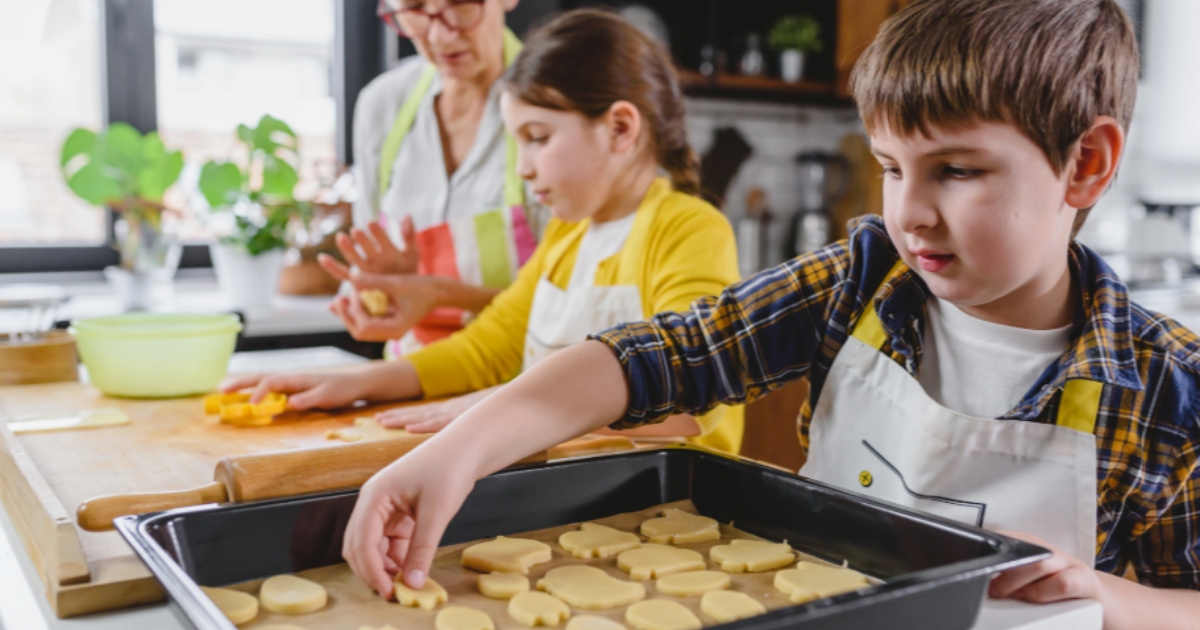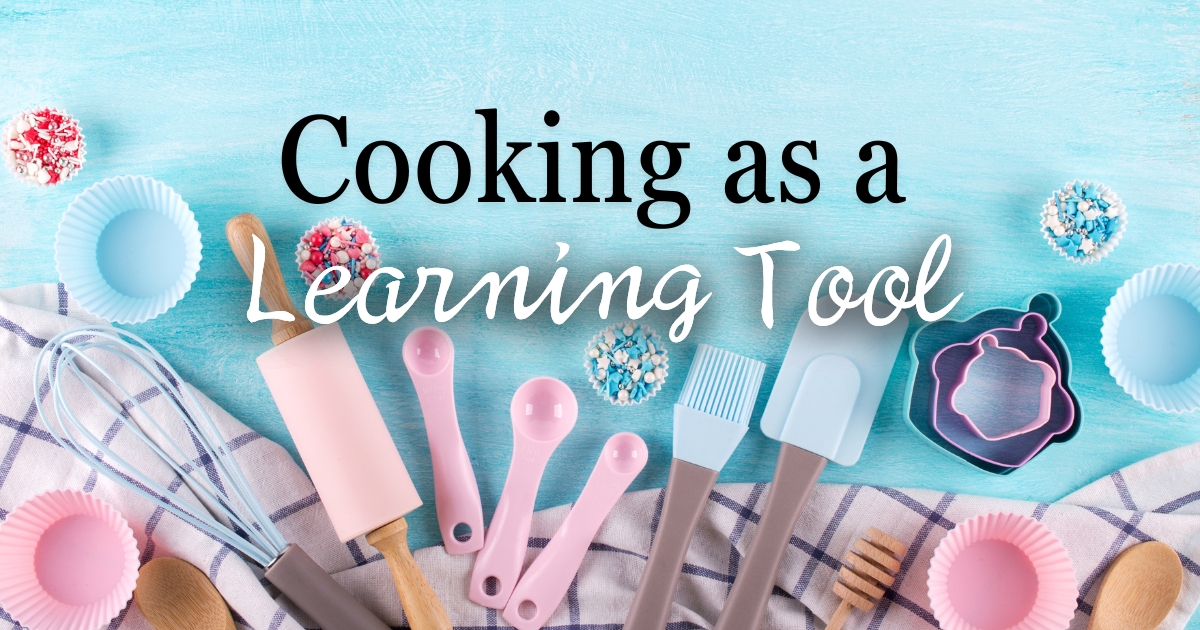Homeschooling provides a unique opportunity to turn everyday activities into enriching educational experiences. One of the most versatile tools for hands-on learning is the kitchen. Cooking isn’t just about preparing meals — it’s an excellent way for children to engage with math, science, and even cultural studies. With the right approach, educational cooking activities can provide your children with a deeper understanding of key concepts while making learning practical and fun.
Math In The Kitchen: A Recipe For Learning
Cooking is a natural way to build math skills across several areas. It’s an activity that combines numbers, measurements, fractions, and time in a meaningful way. Here’s how you can use cooking to strengthen your homeschooling math curriculum:
Measurement and Fractions
- Understanding Units: Teach your child to measure liquids in cups, tablespoons, or teaspoons using measuring tools. Understanding the difference between a fluid ounce and a dry ounce is a great way to introduce basic unit conversions.
- Fractions in Action: Recipes are often written with fractions. For example, when halving or doubling a recipe, kids can practice their fraction addition, subtraction, or multiplication. “If a recipe calls for 3/4 cup of flour but we only want to make half, how much do we use?”
- Weight vs. Volume: Use a kitchen scale to teach kids about gram-to-ounce conversions and the difference between weight and volume measurements.
Ratios and Proportions
Cooking allows children to explore ratios and proportions effortlessly. For example, when making pasta, you can demonstrate a 2-to-1 water-to-pasta ratio and show how these proportions change based on servings.
Budgeting and Cost Estimation
Turn meal planning into a financial lesson by tasking your child with calculating the cost of ingredients or sticking to a grocery budget. This is an excellent exercise in multiplication and critical thinking while also teaching financial responsibility.
Hands-On Practice Ideas
- Baking Projects: Activities like baking cookies or bread require precise measurements, making them ideal for reinforcing math skills. Younger kids can stick to simple measurements, while older children can use algebraic thinking to convert ingredient ratios.
- Scaling Recipes: Have your child scale recipes up or down, and see how ingredient amounts and cooking times are affected. This makes abstract concepts like proportions much more tangible.
These practical exercises not only enhance math skills but also teach life skills your child can use for years to come.

Homeschool Kitchen Science Experiments
The kitchen is essentially a giant science lab filled with opportunities for discovery. Cooking naturally introduces children to chemistry, biology, and even physics. Here’s a breakdown of how kitchen activities can enrich your homeschool science curriculum.
The Chemistry of Cooking
- States of Matter: Discuss solids, liquids, and gases through cooking activities. For example, observe water boiling (liquid to gas transformation) or butter melting (solid to liquid transformation).
- Chemical Reactions: Baking provides an accessible introduction to chemical reactions. When baking bread, for instance, yeast ferments sugar and creates carbon dioxide gas, causing the dough to rise.
- Acidity and pH Science: Experiment with basic and acidic substances in recipes. Kids can test how acidic lemon juice interacts with baking soda or how vinegar affects baking.
Biology on the Plate
Food is an excellent way to discuss biological concepts such as nutrition and plant growth cycles.
- Nutrition Science: Teach children the breakdown of macronutrients — fats, proteins, and carbohydrates — using real foods as examples. Challenge your kids to identify carbs in potatoes or protein in eggs.
- Spoilage and Preservation: Explore the science of food spoilage and discuss how freezing, fermenting, or seasoning acts as a preservation method.
Physics in Cooking
Heat transfer makes food taste good, but it’s also an excellent way to discuss concepts like conduction, convection, and radiation.
- Convection Baking: Discuss how ovens bake food evenly. You can even add a thermometer to the mix and measure internal temperatures.
- Heat and Solubility: Teach about solubility by dissolving sugar in water. Ask your child why sugar dissolves faster in hot water compared to cold.
Fun Experiment Ideas
- Homemade Ice Cream: Show how salt lowers the freezing point of ice by making ice cream in a bag.
- Density Experiments: Encourage kids to layer liquids like oil, water, and syrup in a glass, observing their densities while discussing the science behind them.
- Growing Yeast: Have your kids combine flour, water, and yeast to see it ferment and produce gas. This is an easy way to introduce fermentation and microbiology.
Through hands-on experiments like these, your kids will see how science is present in everyday processes like cooking, baking, and preserving food.
Exploring Culture Through Food
One of the most engaging ways to make educational cooking activities even richer is by incorporating lessons about culture. Food is a gateway to understanding geography, history, and traditions.
Every culture has dishes that tell a story. By cooking recipes from around the world, your child can learn about customs, traditions, and how certain dishes reflect the geography of their origin. For example:
- Geography: Make Italian risotto and discuss the agricultural regions in Italy where rice is grown. From India’s spices to Mexico’s use of corn, each ingredient offers a glimpse into its culture’s environment.
- History: Bake bread and explore its importance in ancient civilizations like Egypt or Mesopotamia. Food connects your child with history through a sensory, hands-on approach.
- Global Celebrations: Create meals tied to holidays like Lunar New Year, Día de los Muertos, or Diwali. These cooking activities spark conversations about how other families celebrate around the world.
Through cooking, your homeschool curriculum can weave in cultural sensitivity, world history, and curiosity about global traditions.
Making Cooking Safe And Age-Appropriate
Before getting started, consider your child’s age and the specific tasks they can handle in the kitchen. Safety should always come first, so set clear boundaries while allowing your child to explore their skills.
Tips for Age-Appropriate Activities
- Preschoolers (Ages 3–5)
-
- Mix and stir batter
-
- Wash fruits and vegetables
-
- Measure pre-prepped ingredients
- Elementary School Kids (Ages 6–9)
-
- Crack eggs
-
- Knead dough
-
- Use safe tools like plastic knives for cutting soft items
- Preteens and Teens (Ages 10–15)
-
- Follow multi-step recipes
-
- Safely use stovetops, ovens, and sharp knives with supervision
-
- Plan and prepare entire meals
Kitchen Safety Checklist
- Keep knives out of reach for younger children.
- Always watch your child when they are near hot surfaces.
- Teach kids to handle raw meat hygienically, including washing hands afterward.
By implementing these precautions, the kitchen becomes a safe and enriching space for children of all ages.
Educational cooking activities provide a unique way to blend learning with life skills. By approaching cooking with intention, you give your child the chance to see math and science in action while fostering creativity and cultural awareness. The end result? A wholesome learning experience that also happens to taste amazing.



